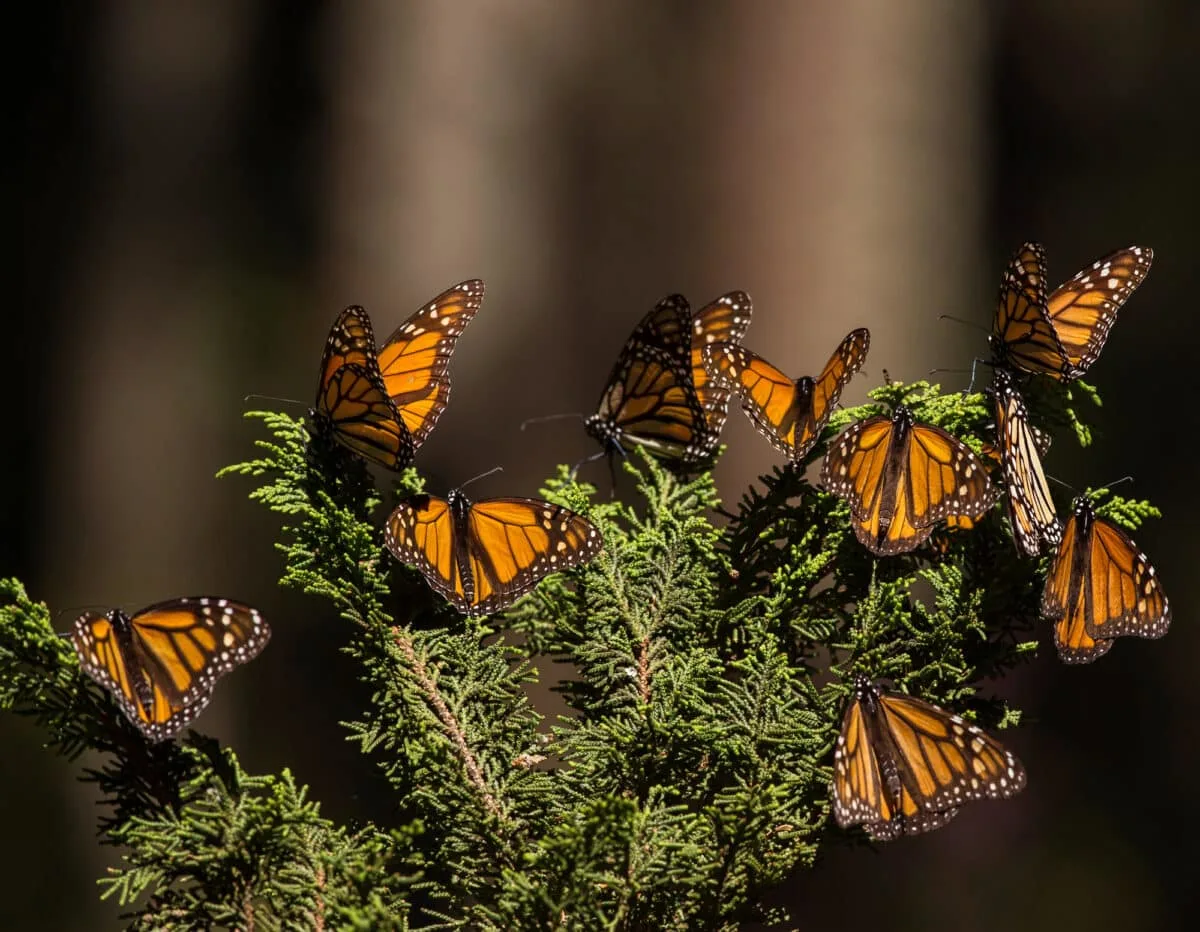The migration of Monarch Butterflies is an incredible natural phenomenon.
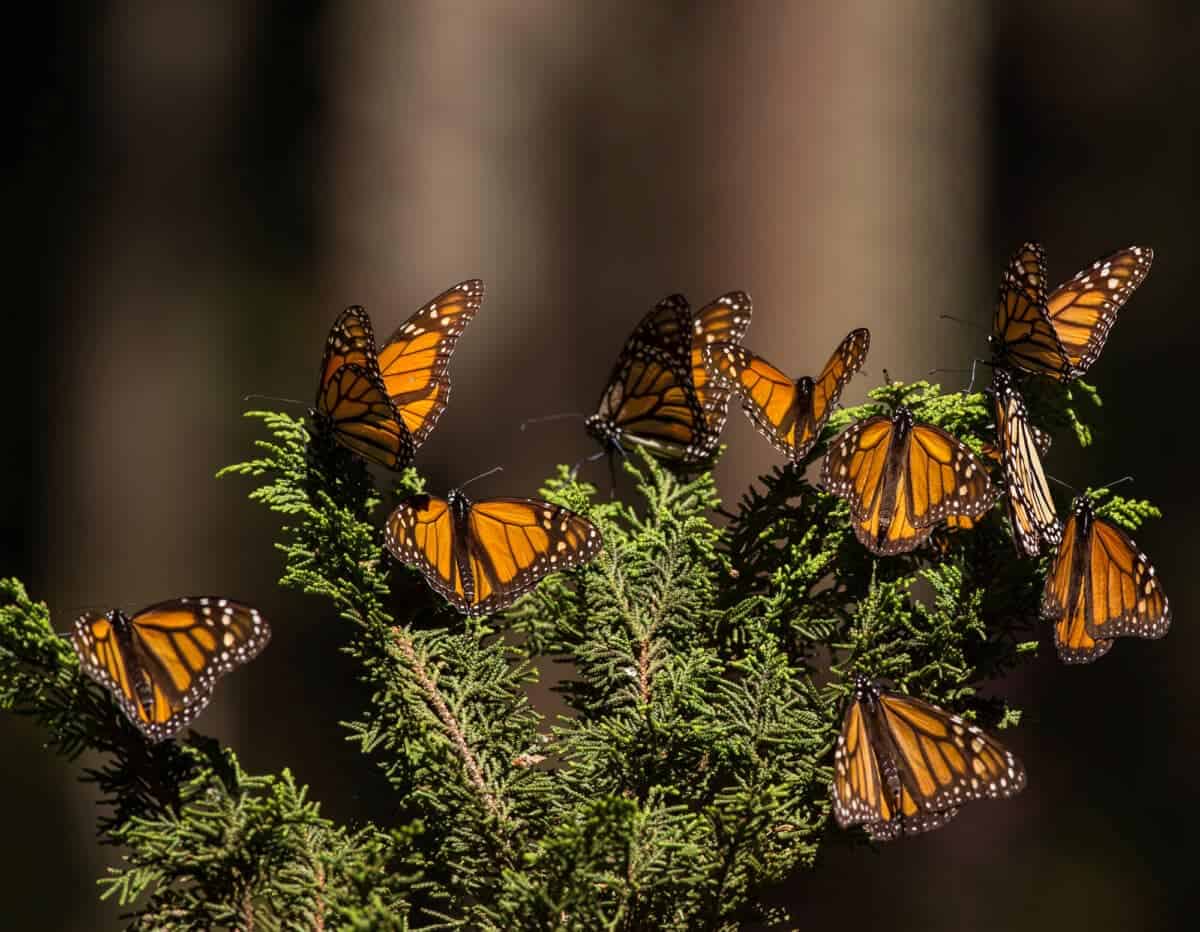
We’re all familiar with the stunning beauty of the fragile monarch butterfly, its bright orange wings, and intricate black veins. But many may not know that this remarkable insect travels across continents yearly in a mass migration spanning thousands of miles.
In this article, we’ll explore the fascinating details of this unique phenomenon, allowing us to appreciate and admire the distinct character of our enchanting little friends known as the Monarch butterflies.
Key Points
- Monarch butterflies migrate from their breeding grounds in Canada down to Mexico.
- Monarch butterflies undergo four distinct stages in their lifecycle: egg, caterpillar, chrysalis, and adult butterfly.
- They migrate to escape harsh winter conditions and find favorable resources for survival.
- Monarch butterflies rely on multiple cues, such as the sun’s position and magnetic fields, for orientation and navigation during their journey.
- These insects have cultural significance and symbolize hope, transformation, and life changes in various cultures.
Introduction to Monarch Butterflies and Their Migration
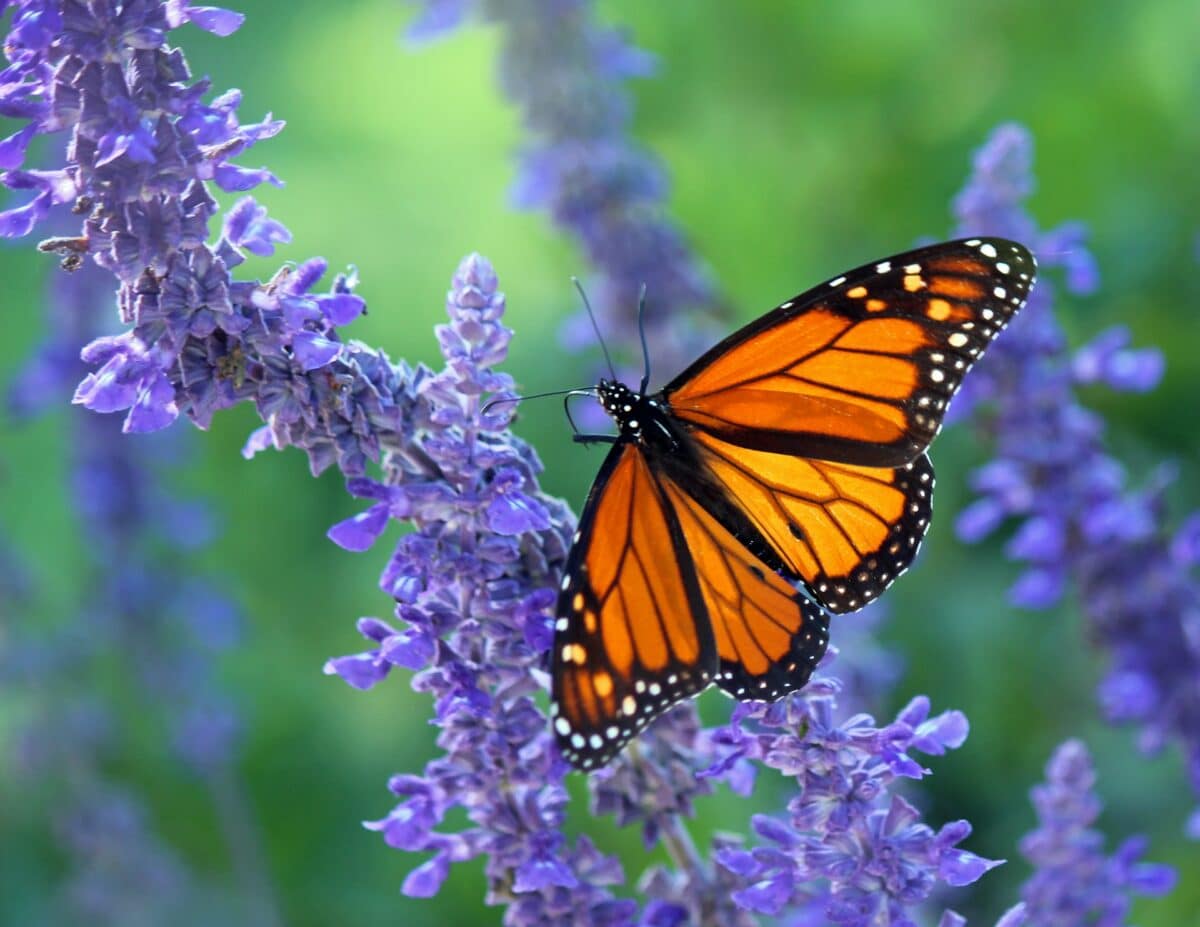
Monarch butterflies are one of the most fascinating creatures on our planet. These stunning insects are renowned for their bright orange wings adorned with black veins and white spots. They have a wingspan of just under four inches and can be found worldwide. What makes the monarch butterfly particularly interesting, however, is its migration pattern. Every year, these resilient insects fly thousands of miles from their breeding grounds in Canada down to Mexico.
This butterfly migration phenomenon is an awe-inspiring event that has fascinated scientists and nature enthusiasts for centuries. These delicate creatures travel unimaginable distances facing extreme weather conditions, predators, and other risks.
Learn more about another beautiful butterfly here.
Monarch Butterflies: Life Cycle and Generations
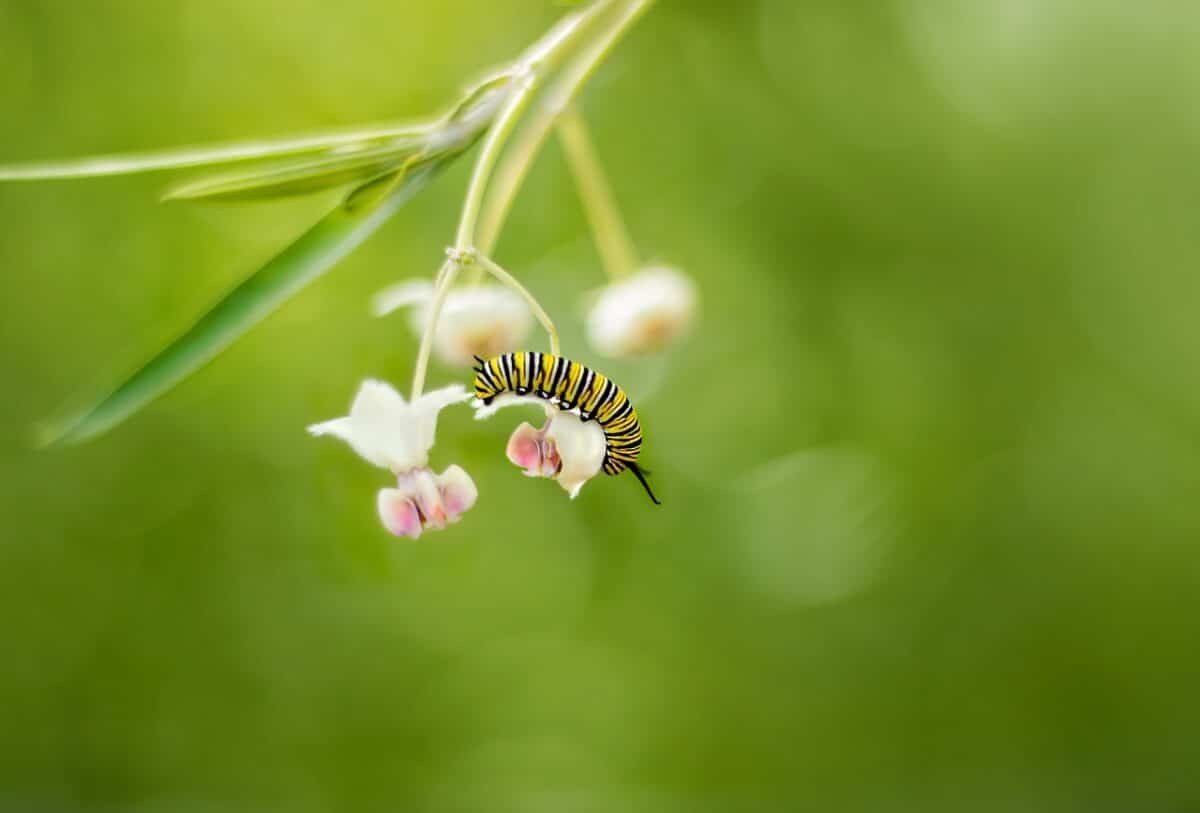
Monarch butterflies are fascinating creatures with a unique life cycle. They are especially interesting because they go through four generations in just one year. This cycle repeats until the last generation, which lives up to eight months and completes the migration journey back to the starting point. Incredibly, these delicate creatures survive and thrive despite their difficulties.
The lifecycle of the monarch butterfly encompasses four distinct stages: egg, larva (caterpillar), pupa (chrysalis), and adult butterfly. This remarkable transformation, known as complete metamorphosis, allows the monarch to undergo a complete change in form and function throughout its life.
#1 Egg
It all begins with a tiny, oval-shaped egg laid by the female butterfly on a milkweed plant. After a few days, a caterpillar hatches from the egg.
#2 Caterpillar
The caterpillar goes through five instars, shedding its skin and growing larger with each molt. It voraciously feeds on milkweed leaves, accumulating nutrients and energy.
#3 Chrysalis
Once the caterpillar reaches its final instar, it forms a chrysalis. Inside the chrysalis, a miraculous metamorphosis takes place. The caterpillar’s body liquefies, and from this gooey substance, a new form emerges. After about two weeks, the chrysalis splits open, unveiling the adult butterfly.
#4 Adult Butterfly
As the adult butterfly emerges, its wings are crumpled and wet. It patiently waits for its wings to dry and harden. Once ready, the monarch takes flight, embarking on a magnificent journey, often spanning thousands of miles. It mates, lays eggs on milkweed plants, and continues the cycle of life, ensuring the survival of its species.
The Instinctual Drive to Migrate
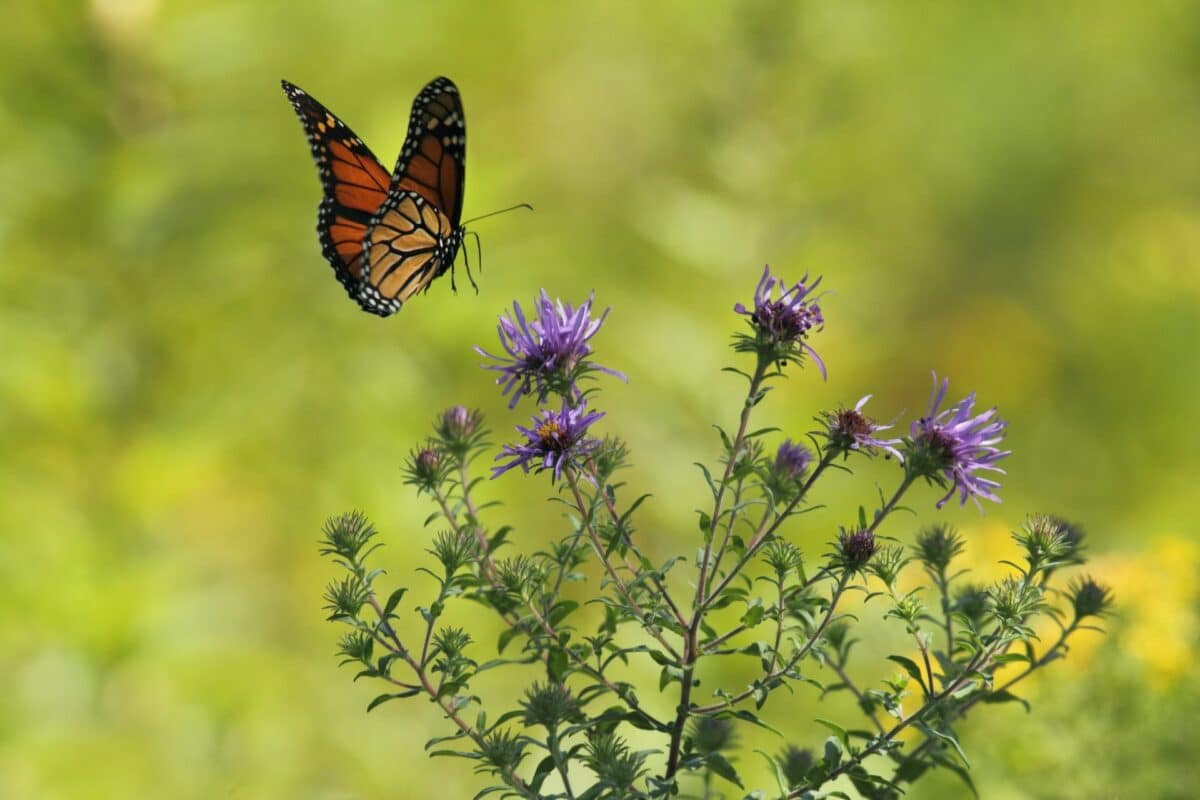
The annual migration of monarch butterflies is a breathtaking wonder of nature. These insects travel thousands of miles from Canada and the United States to Mexico for the winter months. This journey is truly unique because no individual butterfly completes the entire migration. Instead, each generation passes the baton to the next as they travel south. Scientists believe that day length and temperature changes trigger this remarkable instinctual migration drive.
The Starting Point: Breeding and Reproduction
Breeding and reproduction are the backbones of the monarch butterfly’s unique life cycle. This majestic species begins as an egg laid on a milkweed plant. As the larva hatches, it begins to feast on the milkweed leaves and undergoes several molts before forming a chrysalis. From there, the butterfly emerges as a beautiful monarch ready to take flight and continue the cycle. However, reproduction is not just limited to these early stages.
Preparing for the Journey: Nourishment and Energy Reserves
Monarch butterflies embark on a long and arduous journey every year, traveling thousands of miles to reach their wintering grounds in Mexico. While some might consider these delicate insects dainty and fragile, they are tough and highly adaptable creatures.
To prepare for their epic migration, monarch butterflies require nourishment and abundant energy reserves. These majestic creatures rely on nectar from flowers, a rich source of carbohydrates, as well as water and minerals from puddles and wet soil.
As one of the fascinating migrations in the animal world, the journey of monarch butterflies is genuinely awe-inspiring. These tiny creatures travel a distance of thousands of miles every year, crossing mountains and oceans to reach their destination. However, how do these tiny insects navigate such vast distances with pinpoint accuracy? The answer lies in their remarkable ability to orient themselves using multiple cues, including the sun’s position, magnetic fields, and visual landmarks.
Discover another fascinating insect phenomenon: Locust Swarms.
The Migration of Monarch Butterflies: An Epic Journey
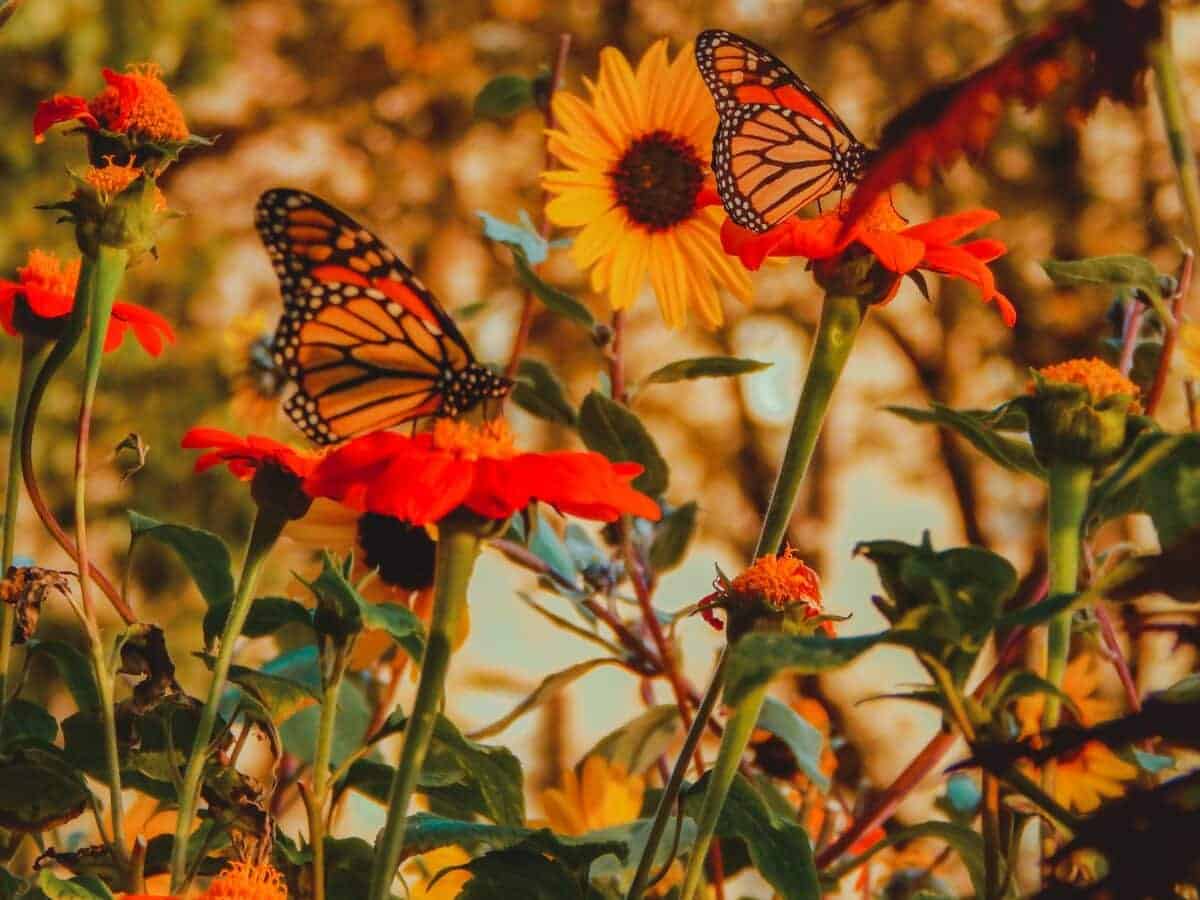
Crossing Borders and Obstacles
The epic journey of monarch butterflies is a phenomenon that can be both beautiful and awe-inspiring. Every year, these insects begin a long journey that takes them across borders and through obstacles, covering thousands of miles. From the forests of Mexico to the sweeping plains of the United States and Canada, monarchs move in an intricate dance that only nature can create. Along the way, they must navigate rivers and mountains, braving storms and predators.
Predators, Climate, and Habitat Loss,
The monarch butterfly is a species facing many challenges in survival. These challenges include predators, such as birds and spiders, changes in climate that affect their migration patterns, and a loss of habitat due to human activity.
Despite these obstacles, through various efforts, monarch population numbers have risen in recent years. One example is the preservation of milkweed plants, which are critical to their survival. It is a testament to nature’s resilience and conservation power.
The Destination: Overwintering Sites and Clustering Behavior
The life cycle of the iconic monarch butterfly is nothing short of awe-inspiring. Every year, millions of monarchs embark on a journey of epic proportions, migrating from their summer breeding grounds in North America to their overwintering sites in Mexico. But what is even more remarkable than the distance they travel is their behavior once they arrive at their destination. Monarch butterflies cluster together in such large numbers that they can weigh down whole branches of trees.
Scientific Research and Monitoring Efforts
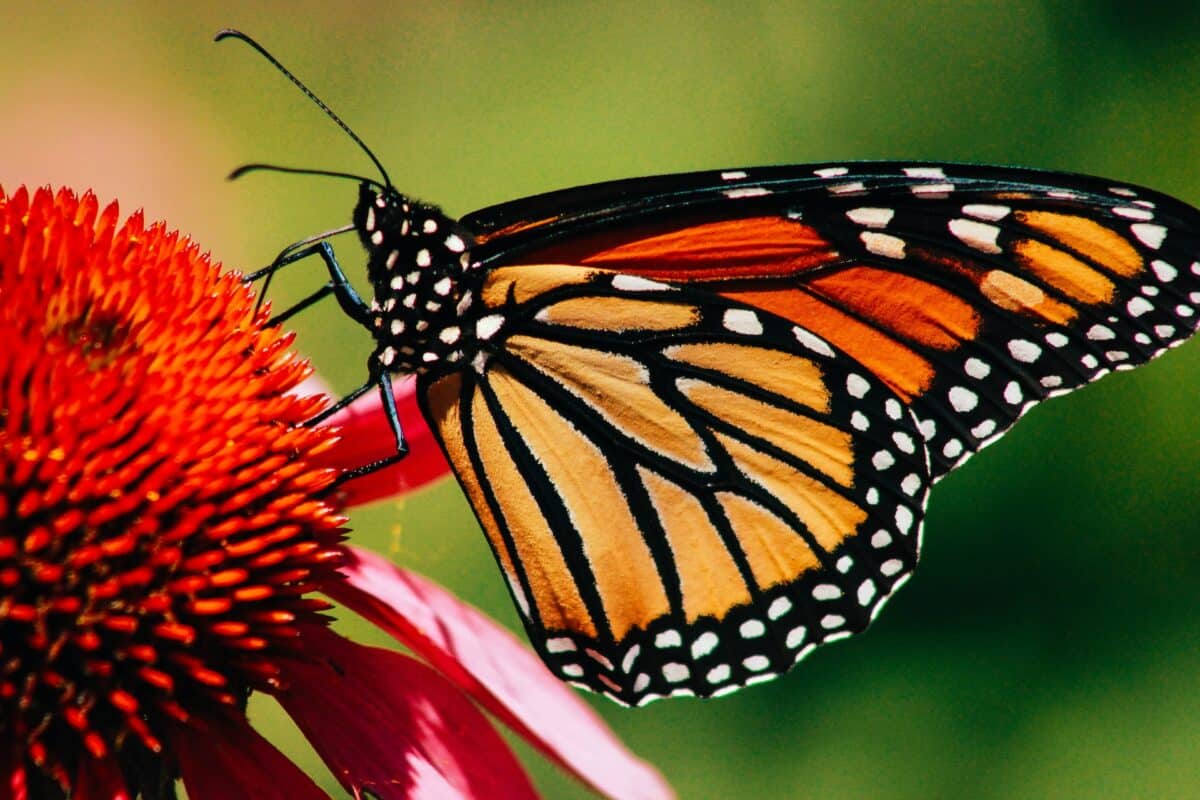
Monarch butterflies’ scientific research and monitoring efforts are crucial in understanding and conserving these beautiful creatures. Monarch butterflies are known for their long-distance migration and distinctive orange and black wings, but there is much more to learn about this species.
Scientists and researchers have been studying the monarch butterfly population for decades, monitoring everything from their reproductive behavior to their migration patterns. With the help of citizen science programs, these efforts have expanded to include tracking the Monarch’s migration across North America.
Cultural Significance and Symbolism of the Migration of Monarch Butterflies

The monarch butterfly migration is more than just a natural phenomenon – it also carries cultural significance. Across the world, the monarch butterfly has been regarded as a sign of hope, transformation, and significant life changes. In Mexican culture, these butterflies are considered the souls of departed loved ones, returning for a visit during the Day of the Dead festivities. They are also symbolic of the Aztecs’ sun god, Huitzilopochtli.
FAQs
The monarch butterfly symbolizes transformation, beauty, and rebirth. Its lifecycle and remarkable migration patterns have made it a powerful symbol of change and resilience.
Most monarch butterflies migrate to Mexico for the winter. They travel from the eastern and central regions of North America to specific overwintering sites in Mexico’s oyamel fir forests.
Monarch butterflies migrate in order to escape the harsh winter conditions and find more favorable resources for survival. By migrating to warmer regions with abundant food and suitable breeding habitats, they ensure their survival and the continuation of their species.
The lifespan of a monarch butterfly varies depending on the generation and time of year. The first three generations of monarch butterflies have relatively short lifespans, ranging from two to six weeks. However, the final generation, known as the “super generation,” can live for 8-9 months.
The Migration of Monarch Butterflies: Summing Up
These tiny creatures embark on a treacherous journey that sees them travel from their breeding grounds in North America to their wintering sites in Mexico. Along the way, they face many obstacles, including predators, storms, and the exhaustion of flying for hours on end.
Despite these challenges, monarch butterflies continue to make this incredible journey year after year. This migration is not just a feat of endurance but a powerful reminder of the resilience of nature and the wonders of the world around us.
Thank you for reading this article about the migration of monarch butterflies! Keep exploring the world of insects with us:
- The Fastest Wingbeat Frequency In Nature
- The World’s Smallest Predator
- The Most Powerful Insect-Sting
Join our Forum for free today!


